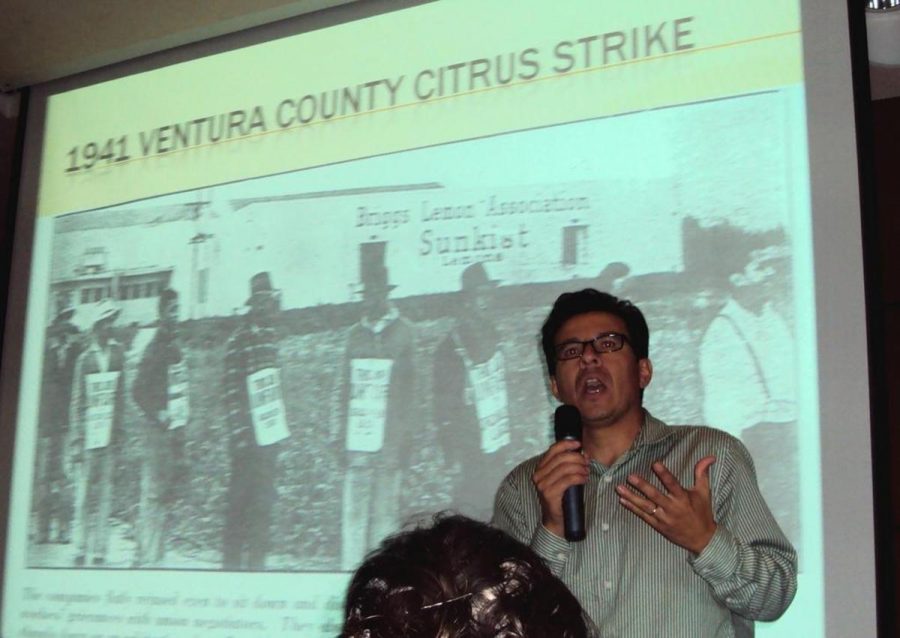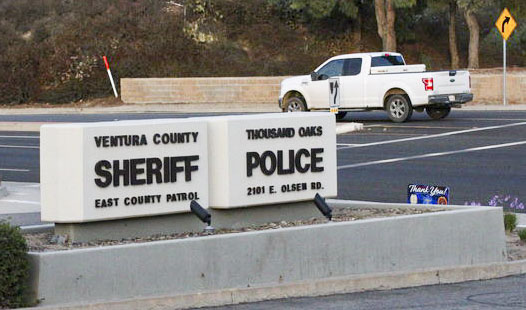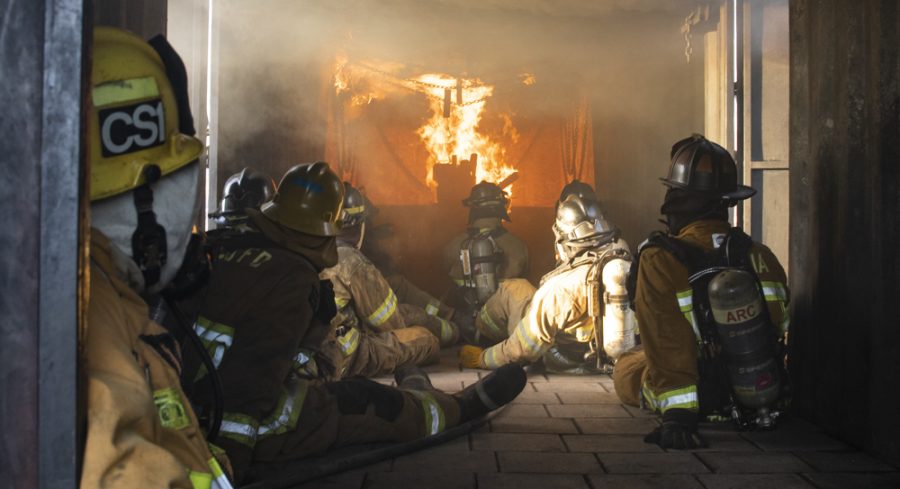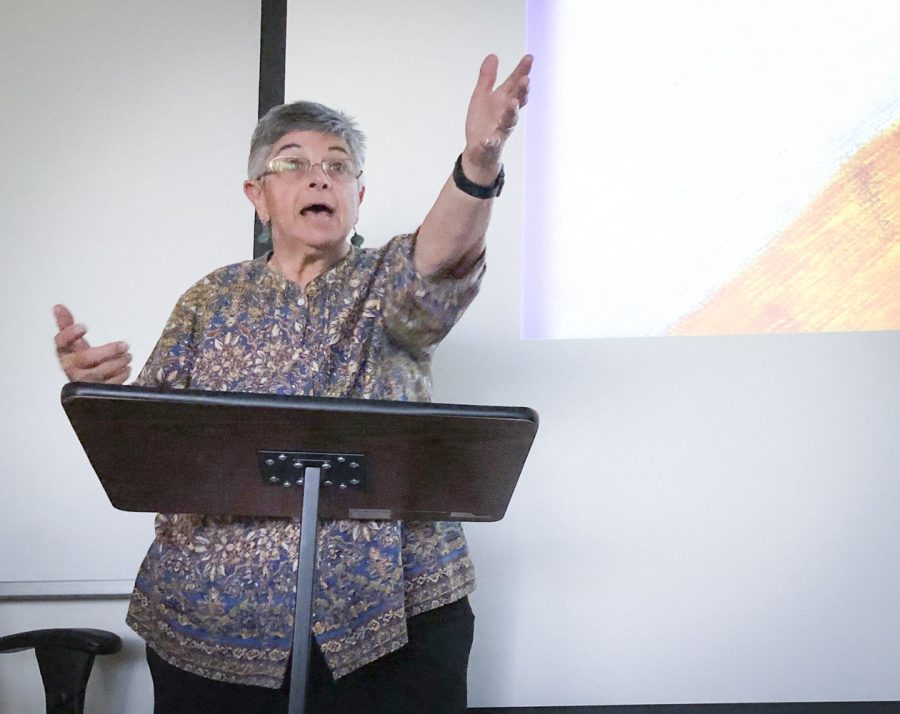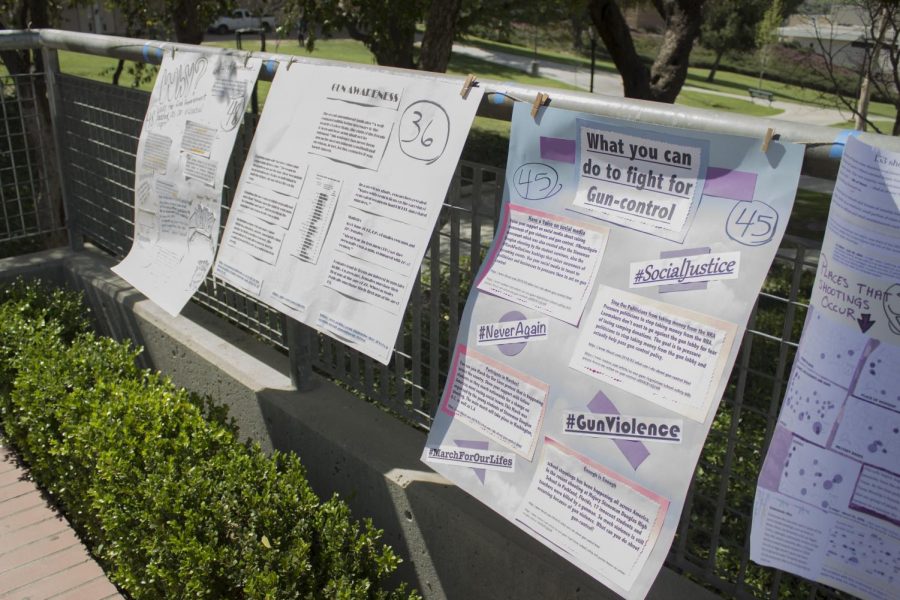The “Bracero Program” came back to life in a vivid history lesson given as an effort to educate the students of Oxnard College and community members” altogether, in hopes of its continued awareness.
Dr. Jose Alamillo, Chicano Studies professor at Cal State University Channel Islands gave an extensive overview during his lecture titled “The Braceros of Ventura County.”
Pilar Pacheco, assistant director of the Center for Community Engagement, was also in attendance to shed some light on the “Bracero Exhibit” that is currently displayed at CSUCI.
The exhibit is organized by the Smithsonian’s National Museum of American History. The presentation was part of the Oxnard College Literature, Arts and Lecture Series on Sept. 29, which gave the audience an opportunity to connect with their history through a small glimpse of the past.
“The Bracero Program has left a legacy in Ventura County because of its contribution to the growth of agriculture,” said Alamillo. “If it wasn’t for the Braceros, we wouldn’t have had anyone working during and after WWII. Today, it’s still the same concept. No one wants to work hard labor in the fields, but everyone complains that they are hired to do these jobs.”
In the 1940s, the “Bracero Program” was developed, and in some ways, still goes on today.
This program allowed Mexican laborers into the U.S. for a limited amount of time for the purposes of assisting crop growers as seasonal agricultural workers.
The pay, treatment and living conditions of the Braceros were below par and many would argue whether the U.S. government ever cared enough of such exploitation.
“You had to have calluses on your hands to be selected,” explained Alamillo. “Then they were stripped naked and sprayed down with DDT.”
Entry to this program was not easy and laborers often had to wait in line for days at a time in order to apply. Once you were selected, you were sent to various camps to work in.
The camps consisted of large rooms in remote desert areas, of which barracks were placed in them.
They were crowded, hot, and many beds had no mattresses to accompany them. In those days, the Braceros were paid $1.75 per day, per worker.
From that amount, 25 cents was deducted for their food and shelter.
Everardo Gutierrez Rivera, E.O.P.S. Counselor at OC, spoke up about many of the anti-immigrant sentiments that are heard throughout our nation and its prevalence in our society.
“As a society, we have no room to criticize the newest arrivals,” said Rivera. “We lose focus on how much they contribute to our society and since they have no power or voice, they are overshadowed by criticisms. Immigrants are living in the shadows and we need to bring them out of the shadows and welcome them into society.”
Several comments regarding the mixed feelings of immigration arose during the lecture.
However, it did not take away from the topic at hand and the importance of the Braceros in our history.
Many students were shocked to find out that Ventura County had over 5,000 Braceros working in their fields, which was the largest group out of 23 states that housed the program.
Ventura County received 20 percent of all the Braceros, nationally, due to the agricultural demand of this region. The largest of the camps was called Buena Vista camp and it was located at Rice Ave. and 5th St. in Oxnard.
Among the several students that attended the lecture was Crystal Cortez, a 23-year-old history major.
“I didn’t know that most of the Braceros worked here in Oxnard,” said Cortez. “It makes me really appreciate where I come from and realize how much hard work is put into these fields.”
Shelley Savren, English professor coordinator for the lecture series was impressed with the presentation.
“Many of our students have Braceros in their families and I think that as a campus community we should know what is going on today,” said Savren. “This is a really meaningful project right here in our backyard.”
For more information on the Bracero exhibit at CSUCI, please visit www.csuci.edu/bracero-exhibit/index.htm or contact Pilar Pacheco at (805) 437 – 8851.

Dr. Jose Alamillo takes some time to answer questions and give his perspective (Photo By Monica Valencia)

Pilar Pacheco takes a moment to inform students on the “Bracero” exhibit at CSUCI (Photo by Monica Valencia)

